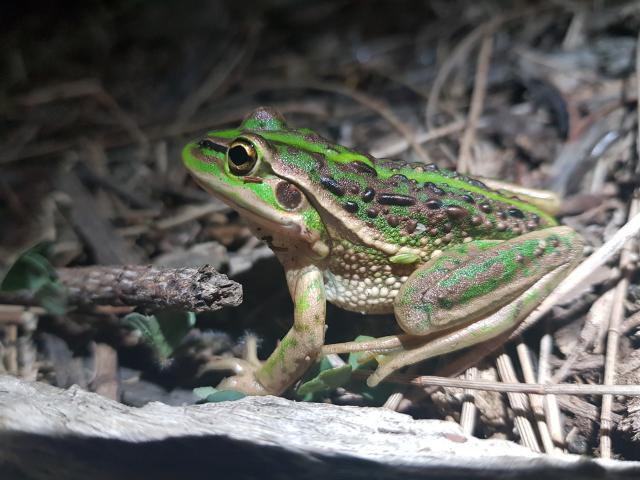Wyndham is renowned for its waterways and wetlands and the many bird species they attract,
However thanks to the dedicated research of some local volunteers, much more is now known about creatures living beneath these waters as well.
Conducted by the Werribee River Association and funded by Wyndham council, the Frog Engagement & Protection Project was a series of surveys on the species and populations of amphibians living in the area.
Project lead Erin Bradley said the aim of the surveys was to fill a knowledge gap.
“There’d previously been a lack of scientific literature available about frogs in Wyndham.”
With a lot of waterways to cover and a lack of information to guide them, filling that gap was no easy task.
“We did one hour surveys five times per month for 10 months”.
said Ms Bradley who led a team of 61 volunteers on the project which began in August 2022 and finished in May this year.
“We had five set sites that we’d survey each month.
We had one at Graham’s Wetland in Werribee South, one along Davis Creek in Tarneit, Skeleton Creek in Hoppers Crossing, Cunningham’s Wetland in Point Cook and then Harpley Estate Cultural Park in Werribee,” Ms Bradley said.
To conduct the survey’s, volunteers would sit and listen to the frogs and then use head torches to try and spot them.
“When we spotted them we’d record information about what species they were, their maturity and how many,” she said of the 561 frogs they recorded across five species.
Living up to it’s name, The Spotted Marsh Frog was spotted the most, while the Common Eastern Froglet is the most common frog in Wyndham, but is easier heard than seen.
“They’re hard to spot, they’re brown” said Ms Bradley.
Providing size and colour doesn’t make spotting frogs any easier, she pointed to the
endangered Growing Grass Frog as the rarest species they recorded.
“They’re big and they’re green.”
Ms Bradley said the surveys showed overall frog numbers and the range of species in Wyndham remained strong, but controlling litter and weeds were the key to maintaining their habitat.
A report based on the surveys can be found at:
Survey data can be accessed at:







